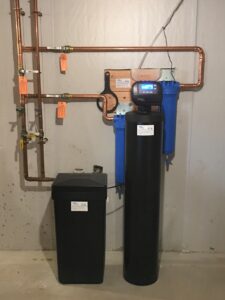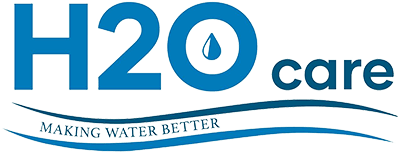Maintenance of most water softeners is normally recommended on an annual basis as it is for most other water filtration equipment. There may be some interim operational problems (identified later in this report) which can be diagnosed and remedied by the homeowner. To ensure proper operation and to maximize the useful life of your equipment, regular maintenance is recommended. There are various brands of water softeners, some more efficient than others in terms of water usage and salt requirements. Some models are capable of softening larger volumes of water, therefore estimating water usage prior to selecting a system is important. For complicated problems, contacting your water treatment service technician for water softener repair is your best option. See some common symptoms of potential problems with your water softener below.

Check These If Your Water Softener Is Not Working
Make sure the water softener is “on” and working, that is, that the system has power, then:
- Check salt tank: Is there salt in the brine tank? If not, add at least a few bags salt to the tank.
- Check power to the softener: If the unit uses electricity to run a timer, be sure it’s plugged in to a live outlet and has power. Some water conditioners use a low-voltage transformer to power the control. Be sure that device is plugged in, and working. Also, a power failure could cause the timer to be improperly set. Re-set the day of week and time of day on the softener timer after an electrical power failure or after the softener has been powered “off” for a time.
- Check the water softener bypass valve: You want to see that the water softener is not on “bypass”. Is household water flowing through the unit? This valve is an option and may not be installed on your unit. However, there may be standard plumbing valves or globe valves that accomplish the same purpose.
- Manually regeneration cycle: Then try a manual regeneration cycle You’ll see on most units a lever you can push on the control box to start that regeneration process. Note: your home will not be delivered conditioned or softened water while the water softener is in the regeneration cycle. Therefore, it’s best not to use water (or use as little as possible- flushing toilets is OK, etc.) in the home until the regeneration process is complete. This is why most programmed regeneration is set for late at night when water usage is much less likely.
- Feel & test the water supply: if you can’t get a lather when bathing the system may not be sufficiently treating the water.
SYMPTOMS OF POTENTIAL WATER SOFTENER REPAIR NEED

High Efficiency Water Softener
Without fully diagnosing, it can be very difficult to determine what is really causing the problem. This is where a service technician will be able to trouble shoot and determine a solution to the problem. While there are many possible symptoms and problems a softener may experience, you may see the following:
- Excessive salt usage by the system, requiring higher than normal salt tank fill ups
- Staining on home fixtures even though the water softener seems to be running properly
- Mineral discharge from the water softener and into the home’s water supply
- Loss of water pressure downstream from the softener
- Hard water evidence observed right after a regeneration cycle.
It should be noted that once a water softener gets past a certain age, it may be time for replacement. You should discuss the potential merits of this with your water treatment professional.



